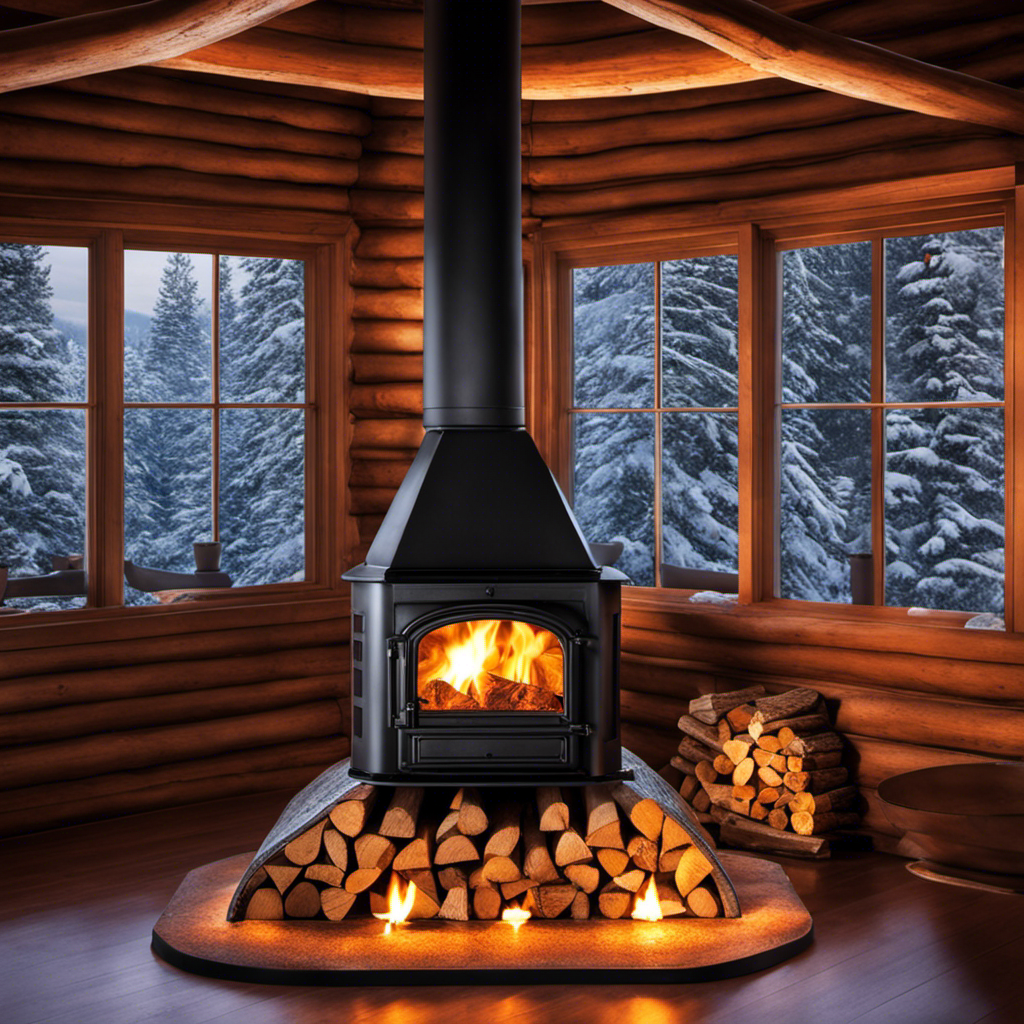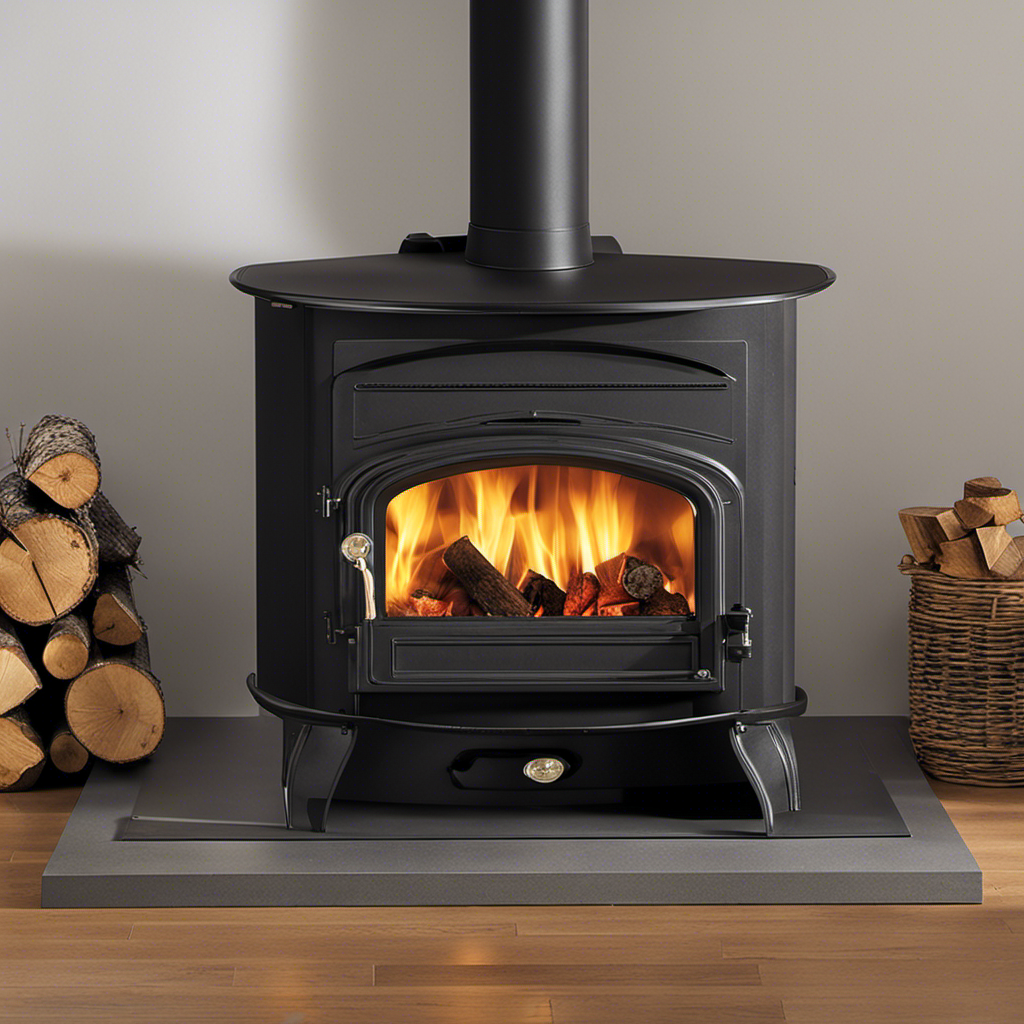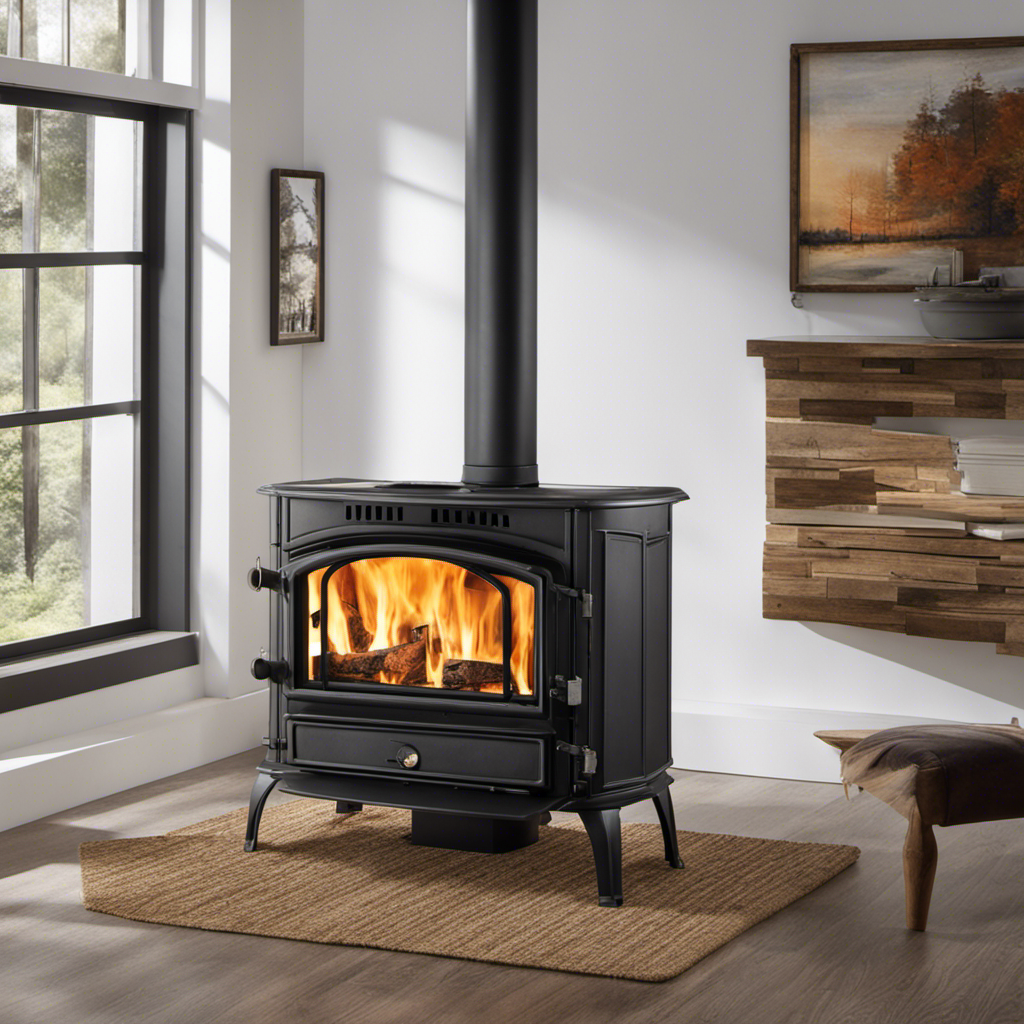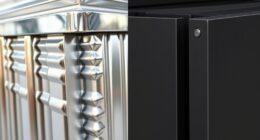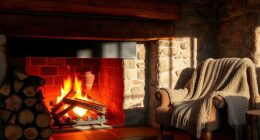As an experienced lover of wood stoves, I have mastered the art of starting a robust fire within my cozy home.
In this article, I’ll share my tried and true methods for getting your wood stove burning hot.
From selecting the perfect firewood to mastering the art of airflow control, I’ll guide you through every step of the process.
Get ready to experience the warmth and coziness that only a roaring wood stove can provide.
Let’s dive in and ignite those flames!
Key Takeaways
- Choose dry wood with low moisture content for maximum heat
- Season the wood for at least six months before using it
- Stack the firewood in a well-ventilated area in a crisscross pattern
- Control airflow and draft by adjusting the damper and using heat reflectors for better heat distribution
Choosing the Right Wood for Maximum Heat
I need to choose the right wood for maximum heat in my wood stove.
When it comes to selecting the right wood, it’s important to consider its moisture content. Wet or green wood burns less efficiently and produces less heat, while dry wood burns hotter and more efficiently. To ensure the wood is adequately dried, it should be seasoned for at least six months. Splitting the wood into smaller pieces can also speed up the drying process.
Additionally, it’s worth exploring alternative fuel sources such as wood pellets or compressed logs. These alternative fuels are typically drier and more consistent in moisture content, resulting in a more efficient burn and greater heat output.
Preparing and Stacking the Firewood
To ensure an ample supply of firewood, I’ll need to gather and stack at least two cords of wood before the winter season begins. Proper firewood storage is essential to ensure that the wood remains dry and ready for use. Here are three key steps to consider when preparing and stacking firewood:
-
Choose the right location: Select a spot that’s well-drained and away from the house to prevent moisture buildup. A covered area, such as a woodshed or tarp, can provide extra protection from rain and snow.
-
Season the firewood: Freshly cut wood contains high levels of moisture, making it difficult to burn efficiently. To properly season firewood, split it into smaller pieces and stack it in a well-ventilated area for at least six months. This allows the wood to dry out and reach the optimal moisture content of around 20%.
-
Stack the wood properly: When stacking firewood, create a sturdy base using logs or pallets to keep the wood off the ground. Stack the wood in a crisscross pattern, allowing for proper airflow and reducing the risk of mold and rot.
Building and Lighting the Perfect Fire
One of the key steps in building and lighting the perfect fire is to use at least three different types of firewood for optimal heat and burn. This ensures a well-balanced fire that ignites quickly and provides consistent heat.
When starting a fire, it’s important to use small, dry kindling as the base. This helps to ignite the larger pieces of firewood. To start the fire quickly, use crumpled newspaper or fire-starters along with the kindling.
Avoid using wet or green wood as it can be difficult to ignite and will produce more smoke than heat. Another common mistake to avoid when lighting a wood stove is overcrowding the firebox. Leave enough space for air to circulate, allowing the fire to burn efficiently.
Controlling Airflow and Draft for Optimal Heat
I can adjust the damper to control the airflow and draft, ensuring optimal heat from the wood stove.
Here are three key ways to improve heat distribution and maximize the efficiency of your wood stove:
-
Adjusting dampers for better airflow: By opening the damper slightly, more oxygen is allowed in, resulting in a hotter fire. Conversely, closing the damper restricts airflow, slowing down the burn rate and conserving heat.
-
Using heat reflectors to increase heat distribution: Placing heat reflectors such as metal sheets or tiles behind the wood stove can help radiate heat back into the room, preventing heat loss through the wall. This simple addition can significantly improve the overall warmth in your space.
-
Cleaning and maintaining the wood stove for efficient burning: Regularly removing ash buildup and ensuring proper ventilation can optimize the burning process. A clean stove promotes better airflow, allowing for a hotter and more efficient burn.
Maintaining and Cleaning the Wood Stove for Efficient Burning
Regular maintenance and cleaning of the wood stove ensures efficient burning and prolongs its lifespan. To keep your wood stove in top shape, it’s essential to follow proper cleaning techniques.
Start by removing any ash and debris from the firebox using a shovel or vacuum designed for stoves. Clean the glass window regularly with a non-abrasive cleaner to maintain visibility.
It’s also important to inspect and clean the chimney to prevent creosote buildup. Troubleshooting common issues such as a weak fire or smoking can often be resolved by cleaning the stovepipe and checking for obstructions.
Additionally, check the gaskets and seals for wear and tear, as they play a crucial role in maintaining an airtight seal.
Frequently Asked Questions
Can I Use Softwood Instead of Hardwood for Maximum Heat in a Wood Stove?
Yes, you can use softwood instead of hardwood for maximum heat in a wood stove. While hardwood generally provides longer burn times, softwood burns hotter and faster. Other factors affecting heat output include stove design, air flow, and moisture content of the wood.
How Long Should I Let the Firewood Dry Before Using It in a Wood Stove?
To get a wood stove burning hot, it’s important to use properly seasoned firewood. The best firewood seasoning process involves letting it dry for at least six months. Proper firewood storage is crucial for effective burning.
What Is the Best Way to Stack Firewood for Maximum Heat Production?
To maximize heat production, I’ve learned that proper firewood stacking techniques and using the best types of wood are key. It’s like building a strong foundation for a blazing fire.
Should I Use Kindling or Newspaper to Start the Fire in a Wood Stove?
I prefer using kindling to start a fire in a wood stove. It’s easier to ignite and produces a more sustained flame. Newspaper can work in a pinch, but it burns quickly and may not provide enough heat.
How Often Should I Clean the Chimney of My Wood Stove for Optimal Burning Efficiency?
I clean my wood stove chimney every year for optimal burning efficiency. Signs of a dirty chimney include a strong smoky smell, difficulty starting a fire, and excessive soot buildup.
Conclusion
In conclusion, by following these steps, you can easily get your wood stove burning hot and efficiently.
Remember to choose the right wood, stack it properly, and build a well-ventilated fire.
To maintain optimal heat, control the airflow and regularly clean your wood stove.
With these techniques, your wood stove will be roaring with heat, creating a cozy and inviting atmosphere in your home.
So go ahead, light that fire and enjoy the warmth of your wood stove!
Logan’s affair with adventure began in childhood. He hailed from a small town where vast forests bordered one side and endless shores stretched on the other. His days were spent exploring uncharted woods, climbing tall trees, or listening to the tales of old sailors. This early immersion in a world brimming with stories and mysteries became the foundation of his passion for writing.

